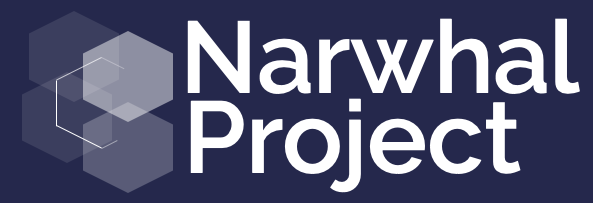by Charles Plant | Jan 30, 2015 | Innovation
 In the last few days I’ve had a few great examples of why companies both big and small can’t see the competition coming, can’t innovate and frequently get bested by much smaller firms. The point was really driven home by a meeting I had recently with a company which shall remain nameless.
In the last few days I’ve had a few great examples of why companies both big and small can’t see the competition coming, can’t innovate and frequently get bested by much smaller firms. The point was really driven home by a meeting I had recently with a company which shall remain nameless.
This company is loosely in the media industry. They have had declining revenue for ten years now. In fact revenue has been declining in double digits for that period. As you can imagine, after 10 years of double digit decline, there isn’t much left.
Meanwhile, new upstarts in the same area of the media industry have had double and even triple digit growth, have become the companies that everyone talks about and have been invested in by the world’s best venture capitalists.
So what is it that makes the difference? Two things. The older companies have been around for a while and are populated by people who fundamentally don’t like two things: change and ambiguity.
When a new form of competition enters the market, the first thing an established company has to do is to change. But if it has employees who don’t like change then without replacing all its employees, it is hard to create the type of change that is necessary.
The next problem is ambiguity. Even if people like to change, you have to like changing from a clear situation to one with a great deal of ambiguity. The challenging upstarts are exploring new ways of doing business, new business models, and new products. Creating these things is a highly ambiguous exercise. When you start out, you don’t know where you’re going to end up.
Many people who would embrace change are reluctant to embrace anything ambiguous. They want to know what’s at the end of the change process if they commit to it. They are reluctant to change to an ambiguous situation and with that, entropy sets in.
The lesson to me is that if you’re starting a company or are in one that is being pummelled by new upstarts, look for people who like change and ambiguity or you’ll end up running the equivalent of a buggy whip maker in the automotive age.
by Charles Plant | Feb 27, 2013 | Innovation
 I was talking yesterday with someone who does most of her work at home, on a computer, sitting at the dining room table. Sounds idilic and it really is since the dining room is in Whistler and the office is in Vancouver. Sounds like a great life and part of an evolving trend but in the long run, I don’t think it works.
I was talking yesterday with someone who does most of her work at home, on a computer, sitting at the dining room table. Sounds idilic and it really is since the dining room is in Whistler and the office is in Vancouver. Sounds like a great life and part of an evolving trend but in the long run, I don’t think it works.
Today’s article on the Globe and Mail on Telework or Teamwork puts some balance to this telecommuting trend. Yahoo has even gone so far as to banning its employees from working remotely.
Don’t get me wrong, I do believe that working from home some of the time is a good thing, but all of the time, not so much. While companies are trying to save a few thousand dollars per year on an employee costing upwards of $100,000, they are losing a chance to connect, inspire, motivate and bond with employees.
To lead effectively, people need to know that you care about them and that just can’t be done from a distance.
by Charles Plant | Feb 5, 2013 | Innovation
 There’s lots of literature on the diffusion of innovation (nerd-speak for how innovation spreads) but most of it is devoted to how to get customers to innovate.
There’s lots of literature on the diffusion of innovation (nerd-speak for how innovation spreads) but most of it is devoted to how to get customers to innovate.
Never mind customers, how do you get your bosses or co-workers to innovate, or even your own direct reports, when they are reluctant to do so?
There is quite a lot on the net that would suggest that this is possible and many blogs will tell you how, but domestication of an ass to turn him into a donkey is not that easy.
The problem is that culture can cause inertia and if the culture isn’t supportive of innovation then you had better forget trying to get your boss to be innovative. Instead of wasting time and being frustrated, move on and find somewhere that values innovation.
by Charles Plant | Feb 1, 2013 | Innovation
 So Blackberry finally released their new phone this week. I happen to use a Blackberry but only because I like the buttons. I have tried typing emails on touch screen based smart phones but my inaccurately big fingers seem to mess everything up so I am relegated to an older ‘not-so-bright’ phone.
So Blackberry finally released their new phone this week. I happen to use a Blackberry but only because I like the buttons. I have tried typing emails on touch screen based smart phones but my inaccurately big fingers seem to mess everything up so I am relegated to an older ‘not-so-bright’ phone.
The new Blackberry made me look at what they released and question what type of innovation this represents. Experts (of which I am not) typically classify innovation as one of the following types:
- Sustaining innovations are small enhancements that companies need to issue just to stay in the game.
- Breakout innovations significantly up the level of play within an existing category.
- Disruptive innovations are what we usually think of when we think innovation. These disrupt the current market behaviour by making existing solutions obsolete or transforming value propositions.
RIM’s original Blackberry was a disruptive innovation. No question of that. Apple’s iPhone is probably best seen as a breakout innovation. It upped the level of play but it didn’t establish an entirely new category. (I’m sure you could debate this but if you look closely at how Apple innovates, it typically develops Breakout Innovations like the Mac and the iPod but once in a while disrupts the market with something like an iPad.) Android based phones were probably a Breakout innovation, certainly not Disruptive but in some ways they could be classed as Sustaining as their appeal might be primarily based on price.
The new Blackberry I think is merely a Sustaining innovation. I don’t think it offers anything that is materially new and the key word here is Materially. Easier application switching, blink-less photos, faster loading times? Big Whoop.
It will be interesting to see how this plays out in the market.
February is here, summer can’t be far behind. Have a good weekend.
by Charles Plant | Jan 31, 2013 | Innovation
 Yesterday, I posed the question: “A woman had two sons who were born on the same hour of the same day of the same year. But they were not twins. How could this be so?”
Yesterday, I posed the question: “A woman had two sons who were born on the same hour of the same day of the same year. But they were not twins. How could this be so?”
I had a few people chime in with an answer but no one got it right the first time. The correct answer is that they weren’t twins but were part of a set of triplets.
Now of course, in life there is no one right answer and I had one very agitated reader who was convinced that her answer was correct and in retrospect it was, so there were two right answers. Her answer: That they were adopted but happened to be born at the same time on the same day, in the same year. Thanks Mom, you’re right.
It was interesting to see how people tried to answer the riddle as it showed a little about how they innovate. Each of you have your own way of meeting creative challenges and each of you uses a slightly different style to solve problems.
- Visioners: Those who envision the ideal future. These people leap to a completely new way of doing something.
- Modifiers: People who refine and optimize what has come before. This is the process of incremental adaptation.
- Explorers: Individuals who discover new and novel possibilities. This is done by applying a solution for one thing to a radically different problem.
- Experimenters: To combine and test many unique combinations. These people try out multiple options.
Which type of innovator are you?
by Charles Plant | Jan 30, 2013 | Innovation
 One of my favourite stories is about slow elevators. As it is told, there was a co-op building in New York where tenants were complaining about slow elevators. Management considered all sorts of solutions including installing additional elevators or speeding up the existing ones until one day someone came up with the idea of putting mirrors beside the elevators so people would have something to do when waiting and then wouldn’t notice the slow service. Great lateral thinking.
One of my favourite stories is about slow elevators. As it is told, there was a co-op building in New York where tenants were complaining about slow elevators. Management considered all sorts of solutions including installing additional elevators or speeding up the existing ones until one day someone came up with the idea of putting mirrors beside the elevators so people would have something to do when waiting and then wouldn’t notice the slow service. Great lateral thinking.
Lateral thinking as defined by Wikipedia is “solving problems through an indirect and creative approach, using reasoning that is not immediately obvious and involving ideas that may not be obtainable by using only traditional step-by-step logic. The term was coined in 1967 by Edward de Bono.”
One of the best ways to innovate is using lateral thinking, so in order to get your innovative juices flowing I want you to solve the following puzzle. I’ll post the answer tomorrow in a reply to the blog in case you don’t get it.
Solve This
A woman had two sons who were born on the same hour of the same day of the same year. But they were not twins. How could this be so?
 In the last few days I’ve had a few great examples of why companies both big and small can’t see the competition coming, can’t innovate and frequently get bested by much smaller firms. The point was really driven home by a meeting I had recently with a company which shall remain nameless.
In the last few days I’ve had a few great examples of why companies both big and small can’t see the competition coming, can’t innovate and frequently get bested by much smaller firms. The point was really driven home by a meeting I had recently with a company which shall remain nameless.




